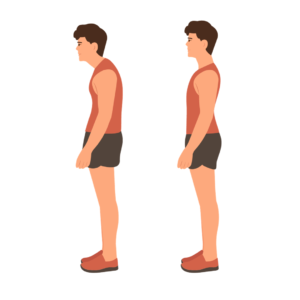Breathing is the most fundamental and yet often overlooked aspect of our existence. We do it unconsciously, around 20,000 times a day, but rarely do we pause to consider its profound impact on our well-being. Deep breathing, however, is the simplest, most powerful tool for balance. It holds the key to a multitude of benefits, from regulating the autonomic nervous system to improving overall physiology. In this blog post, we will explore the importance of proper breathing, how it can positively affect our health, the difference between nose and mouth breathing, the role of posture, and practical tips for breathing effectively.
Why Is Breathing Important?
Breathing is essential for our survival, as it is the primary way our bodies exchange oxygen and carbon dioxide. But it’s not just about survival; it’s about thriving. Deep diaphragmatic breathing has a profound impact on our physical, mental, and emotional well-being:
Deep breaths allow for more oxygen to enter the bloodstream, nourishing every cell in our bodies. This improved oxygenation boosts energy levels and overall vitality.
Proper breathing activates the relaxation response in the body, lowering stress hormones like cortisol and reducing the “fight or flight” response.
Deep, controlled breathing can improve concentration and mental clarity, making it an effective tool for enhancing productivity.
Regulating the Autonomic Nervous System and Physiology
The autonomic nervous system (ANS) consists of two branches: the sympathetic (fight or flight) and the parasympathetic (rest and digest) systems. Deep diaphragmatic breathing plays a pivotal role in regulating the ANS, promoting a shift towards parasympathetic dominance. This shift can:
- Lower heart rate and blood pressure
- Reduce anxiety and stress
- Improve digestion and nutrient absorption
- Strengthen the immune system
- Enhance sleep quality
Nose vs. Mouth Breathing
Nose and mouth breathing offer different benefits, and understanding the distinction is essential:
- Breathing through the nose filters, humidifies, and warms incoming air. It also promotes the release of nitric oxide, which helps to dilate blood vessels, improving oxygen delivery.
- Breathing through the mouth is less efficient and can lead to reduced oxygen intake and various health issues, including dry mouth, dental problems, and even sleep apnea.
The importance of breathing through the nose cannot be overstated. Practicing nasal breathing can optimize oxygen utilization and minimize the risk of health complications.
The Role of Posture
Posture significantly impacts your breathing. Slouched or hunched positions restrict the diaphragm’s movement and limit lung expansion. Maintaining an upright posture not only allows for deeper breaths but also contributes to improved overall health and well-being.

How to Breathe Properly
Proper breathing techniques can be cultivated through mindfulness and practice:
- Diaphragmatic Breathing: Place one hand on your chest and the other on your abdomen. Inhale deeply through your nose, allowing your abdomen to expand as your diaphragm contracts. Exhale slowly through your mouth.
- Mindful Breathing: Practice mindfulness by focusing on your breath. Inhale slowly for a count of four, hold for four, and exhale for four. This technique can help reduce stress and anxiety.
- Breathing Exercises: Explore specific breathing exercises, such as the Wim Hof Method or the Buteyko Method, to further enhance your respiratory health.

Incorporate these practices into your daily routine to reap the many benefits of deep diaphragmatic breathing.
Conclusion
Deep diaphragmatic breathing is a powerful tool for enhancing your physical and mental well-being. That’s why we focus on breathing during our Holistic Health and Movement Coaching sessions. By understanding the importance of breathing, its impact on the autonomic nervous system, the difference between nose and mouth breathing, the role of posture, and practicing proper breathing techniques, you can unlock a path to health and harmony in your life.
References:
- McCall, T. (2007). Yoga as Medicine: The Yogic Prescription for Health and Healing. Bantam.
- Weil, A. (2015). The Healing Power of the Breath. Sounds True.
- Nestor, J. (2020). Breath: The New Science of a Lost Art. Riverhead Books.
